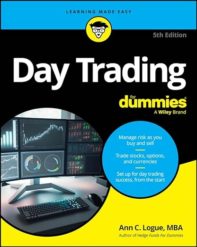 How can women break into investment management? It’s a tough question, because sadly, even at this late date, sexism persists in the investment industry. At the same time, job openings are becoming scarce because of the increased share of assets allocated to passive strategies.
How can women break into investment management? It’s a tough question, because sadly, even at this late date, sexism persists in the investment industry. At the same time, job openings are becoming scarce because of the increased share of assets allocated to passive strategies.
The move to passive will go away at some point. In the meantime, these tips from Lakshmi Bhojraj at Cornell University are useful:
- Tip #1: Network: The key is to network – use your undergraduate and MBA alumni networks, your personal friends and family connections and any resources you have at your university to create lists of contacts you want to target and meet for informational interviews. Make face-to-face meetings an integral part of your job sear Asset management does not hire MBAs in the same numbers as other MBA tracks, partly because turnover is low (a good thing) and the personnel-to-assets under management (AUM) ratio is not terribly scaleable, i.e., one person can just as effectively manage $100 million in AUM as they can $1 billion. However, the number of asset management firms is much larger than the number of investment banks and consulting firms that are looking to hire MBA talent, resulting in meaningful opportunities for those who are looking. ch process as people are much more likely to help those who have made the effort to come and see them. The more people who know you are looking, the more opportunities are likely to be referred your way.
- Tip #2: Learn How to Research and Pitch a Stock/Bond Effectively: So much of the investment management interview is about gauging the extent of your passion for the business and there is no better way to demonstrate that than by “talking shop,” i.e., pitching stocks/bonds effectively. This is why the investment management interview is all about having 2-3 securities or a personal investment portfolio to discuss. Be prepared to answer questions about what interests you about these particular securities and the industry they are in (the “pitch”), and what your personal investment style and process are. Be prepared to be concise or detailed as the occasion warrants but the bottom line is, you need to know these securities inside out as you are asking people to invest in them.
- Tip #3: Conduct Proprietary Research: Depending on the companies you pitch (and they should not be too complicated, well followed by analysts, or obscure), nothing distinguishes an investment pitch so much as doing proprietary or primary research. This means visiting the companies if possible, talking to members of their management teams or that of rivals, using their product, talking to suppliers and customers, to really get a sense of the demand for that particular product. This will help you answer the critical questions in any investment pitch: how strong are the fundamentals of this company and what view do I have that is distinctive from the consensus?
- Tip #4: Follow Up with the Interviewer, Your Network and Stay in Touch: Whether it is an interviewer or the network of contacts that helped you, send them personalized thank you notes and keep in touch. Nothing is more irritating than a “networking leach”, i.e., someone who appears only when they need you and does not bother to acknowledge the help they received along the way.
Those are some good tips, and I am grateful to the Cornell University press office for passing them along. Getting a job in investment management is hardly impossible, and you have to start somewhere. We all do. You may also find that doing the work leads you in another direction. Doing the work matters. It often seems like the goal is more important than how you get there, but in an industry that is in a state of flux, starting off on the job search and seeing where it leads is valuable.


